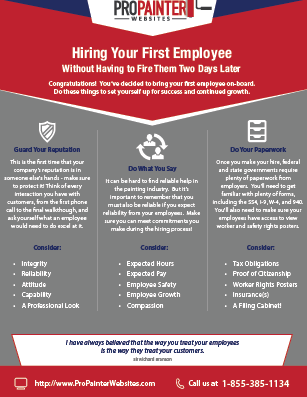When you're preparing an industrial exterior painting task, seasonal aspects can make or damage your results. You'll want to take into consideration exactly how temperature and moisture impact paint application and drying times. Selecting the ideal period can ensure your paint adheres correctly and lasts much longer. But which seasons are genuinely the best for this kind of job? Allow's discover the key elements that can impact your job's success.
The Impact of Temperature Level on Paint Application
When you're planning an industrial outside paint job, the temperature can dramatically influence how well the paint sticks and dries out.
Preferably, you wish to repaint when temperatures vary in between 50 ° F and 85 ° F. If it's also chilly, the paint might not treat properly, bring about problems like peeling off or cracking.
On the other hand, if it's also hot, the paint can dry out also rapidly, stopping appropriate attachment and leading to an uneven surface.
You should also think about the time of day; early morning or late afternoon uses cooler temperature levels, which can be extra favorable.
Constantly check the manufacturer's referrals for the particular paint you're using, as they frequently offer guidance on the ideal temperature level variety for optimum results.
Moisture and Its Result on Drying Times
Temperature level isn't the only ecological element that affects your industrial exterior paint task; moisture plays a substantial role also. High humidity levels can decrease drying times substantially, affecting the general quality of your paint job.
When the air is filled with wetness, the paint takes longer to heal, which can bring about concerns like bad bond and a higher threat of mold development. If you're painting on an especially damp day, be prepared for extensive delay times in between layers.
professional interior painters to monitor local climate condition and plan as necessary. Preferably, aim for moisture levels between 40% and 70% for optimum drying.
Keeping https://interiorhomepaintersnearm98642.blogripley.com/35765654/boost-curb-allure-key-approaches-for-efficient-exterior-painting-in-business-areas consider mind guarantees your task stays on track and provides a long lasting finish.
Best Seasons for Commercial Outside Painting Projects
What's the very best time of year for your industrial exterior painting projects?
Spring and very early autumn are generally your best options. Throughout these seasons, temperatures are moderate, and humidity degrees are typically lower, creating ideal problems for paint application and drying out.
Prevent summer season's intense heat, which can trigger paint to dry also quickly, causing bad bond and surface. Likewise, winter months's chilly temperatures can prevent correct drying out and treating, risking the durability of your paint task.
Go for days with temperature levels in between 50 ° F and 85 ° F for optimum results. Bear in mind to inspect the regional weather forecast for rain, as wet conditions can destroy your project.
Preparation around these elements guarantees your painting task runs smoothly and lasts longer.
Conclusion
In conclusion, preparing your business external paint jobs around seasonal considerations can make a considerable distinction in the result. By scheduling work throughout the suitable temperature levels and humidity degrees, you'll guarantee better adhesion and drying out times. Remember to watch on local weather prediction and pick the right time of year-- spring and early autumn are your best options. Taking these steps will help you achieve a sturdy and professional surface that lasts.
